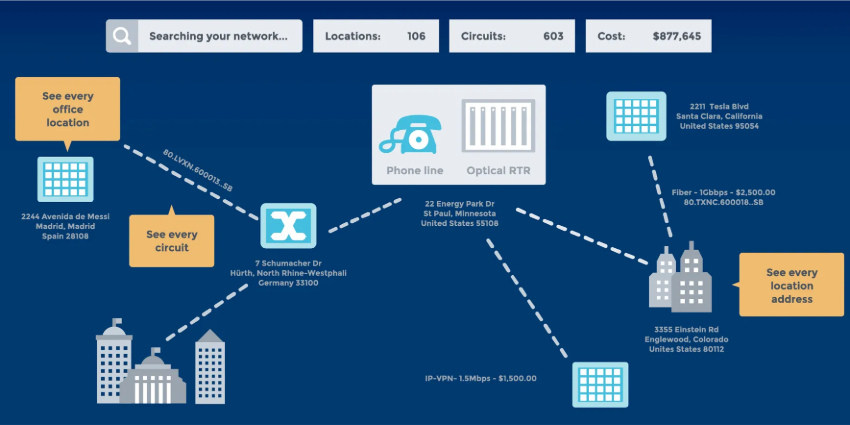For channel partners keen to leverage their value-added application and solution approach, Software Defined WAN (SD-WAN) offers an opportunity to engage more deeply with enterprise clients and to be relevant on application performance and the underlying foundation of digital transformation.
Where traditionally channel partners had to duke it out over price for a network upgrade, SD-WAN shifts the conversation into how a solution can solve business challenges such as application performance, Quality-of-Experience (QoE) and business continuity. With many vendors claiming SDN/SD-WAN capabilities, there is ample choice among technologies and go-to-market positioning, which is great news for channel partners looking to carve out a niche.
Defining SD-WAN
Although covering a large swath of technologies, in 2016, analyst firm Gartner defined SD-WAN as having three required characteristics, including: the ability to support multiple connection types, such as MPLS, Last Mile Fibre, DSL or cellular networks; the ability to perform dynamic path selection, for load sharing and resiliency purposes; and the ability to support VPNs and third-party services including firewalls and web gateways.
The definition still holds up today as the core SD-WAN tenets but has been joined by application acceleration to support the growing move to hybrid IT. The early adopters of the technology tended to be larger enterprises. By its very nature, organisations that have invested in MPLS to connect multiple sites, such as retailers, restaurant chains and distributed manufacturers have the most to gain from having lower cost and more diverse communications links. These ‘FTSE 100’ type organisations tended to go direct to vendors or telecommunications service providers to implement SD-WAN, and largely overlooked alternative application-centric channels.
Midmarket adoption
In this large enterprise category, there are only around 650 UK companies with over 1,000 staff. However, in recent years, SD-WAN has started to gain a following with mid-sized organisations that employ between 250 to 1,000 staff – a group that includes around 7,500 business in the UK. This midmarket cohort predominantly works with the channel and as such offer a tempting target.
The midmarket group tends to have some in-house IT capability but rarely employs deep subject matter experts. SD-WAN is an area where there is still a skills shortage which is prompting the midmarket to turn to trusted channel partners to deliver consulting, VAR, and projects.
Although nominally included within the networking remit, SD-WAN attributes of potentially reducing the cost of expensive MPLS networks in favour of lower cost DSL-based alternatives can provide an immediate ‘return of investment’ that can get partners into an otherwise closed door. However, it is in the context of application performance QoE and business continuity that SD-WAN can kick start new conversations – especially if a customer has experienced a recent application outage or performance issues with critical applications.
Options galore
For the channel community, there are several ways to deliver SD-WAN benefits but these are dependent on the customer position, goals, and budget. There are also two dozen vendors that play in different parts of the SD-WAN spectrum ranging from traditional networking vendors, start-ups, several pure play SD-WAN specialists plus some international carriers that include SD-WAN as a service.
Broadly speaking, the technology is similar in what it delivers. However, the biggest difference is in how it is implemented. Having SD-WAN as a service from an incumbent provider can offer a relatively straight forward “bolt on” option for the customer, but it limits the potential value-add from an application-centric channel partner. It also more closely ties the client to its telecoms provider which may not always be a desired strategy.
If a client wants to retain more control, then deploying a third-party SD-WAN solution may offer channel partners potentially more professional services, installation, and support revenue. However, this approach is generally broken down into two options. The first is a rip and replace of the networking kit to substitute with alternatives that have built-in SD-WAN capabilities. The other option uses hybrid technology that sits alongside existing switches and delivers SD-WAN transparently on top of current WAN architecture.
The choice of which approach to take will be determined by the client’s goals and budget but in general the hybrid approach will be faster to deploy with a lower overall upfront cost – gained by not having to replace networking elements.
Get prepared
As the UK rollout of FTTC and FTTP intensifies along with the switch-off of ISDN planned for 2025, the move away from MPLS and leased lines will prompt more of the midmarket to consider SD-WAN. The recent pandemic has surged home working which has also raised focus on WAN connectivity, and having an SD-WAN strategy in place to offer clients that are thinking about such a move should be high on every partner’s agenda.
Guest Blog by Ronald Rubens, EVP for the Global Enterprise Business, Infovista
At Infovista, we believe the critical networks that people and businesses depend on should run flawlessly. That’s why we build solutions that simplify the modern networks you rely on every day to deliver maximum visibility and exceptional user experiences. We are the technology partner your business can’t run without.







